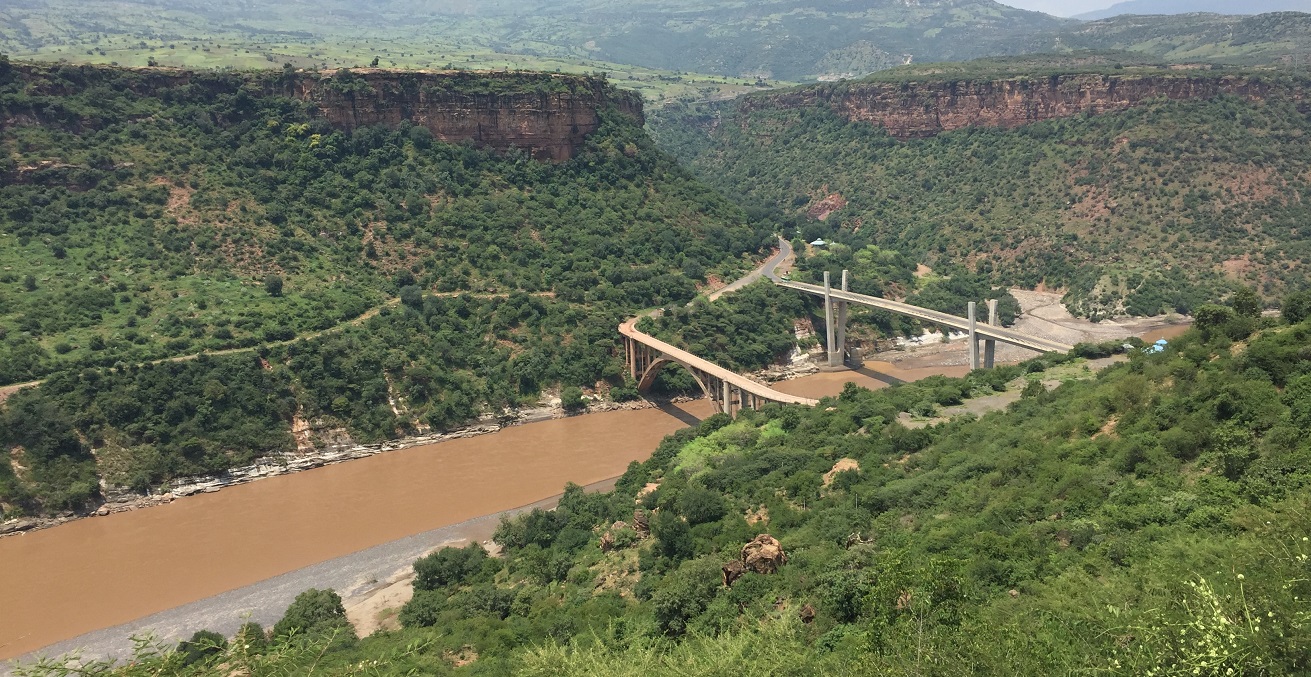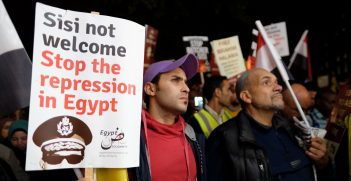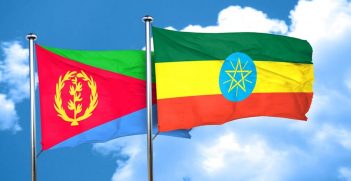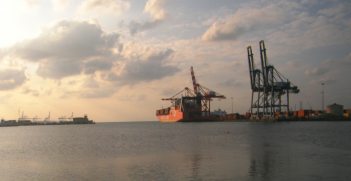Betwixt Development and Securitisation of the Nile: Competing Narratives

Egypt has, for decades, monopolised the use of the Nile River. With Ethiopia’s relentless pursuit of the Grand Ethiopian Renaissance Dam (GERD) project and questioning of Egypt’s hegemony, both sides have adopted competing securitisation rhetorics to legitimise their cause.
On June 29 2020, the United Nations Security Council (UNSC) held a briefing on the GERD. This came following Egypt’s push for a Security Council resolution on the dam. The GERD is a national hydroelectric power dam project constructed along the Blue Nile, known as Abbay in Ethiopia. The construction of the dam has been a cause of disagreement, particularly among the three major riparian states: Ethiopia, Sudan, and Egypt.
In Ethiopia, there has not been a major government project on the Nile until the GERD project was announced in 2011. Abject poverty, internal and external conflicts, various exigencies, and perhaps the lack of political leadership have historically barred any proper consideration of the use of the Nile for development purposes. The construction of the GERD, an ambitious development project, comes as an exception to this history and as a counter-hegemonic assertion of the right of use of the water resource.
Since the project began, the Ethiopian government has been transparent in declaring the technical aspects of the construction. Assurance was also given to the upper riparian states that the project, essentially a non-consumptive one, would cause no significant harm. In this regard, a tripartite committee has been deliberating on the project at various levels since 2012.
Egypt, on the other hand, affixed itself to maintaining the status quo on the Nile and has fought to kill claims for a shared use of the transboundary resource. Egypt has been the sole beneficiary of the status quo on the Nile. Anchored on unconscionable colonial-era treaties, Egypt has had an unreserved claim to use the Nile. The 1929 colonial agreement between Egypt and Sudan gave Egypt veto power over projects in Sudan and other countries under British administration. Egypt’s lobbying power has been cited as one reason for the failure of international financial support for the project. This forced the Ethiopian government to resort to domestic finance mobilisation strategies, which carried the project to its current position.
In public policy framing, narratives have been used to justify governmental actions and omissions. Drawing on the work of public administration scholar Hugh Miller, a narrative can be conceptualised as a tool that stitches ideographs together through the use of story lines. Thus, in framing a certain social policy, the narrative paradigm focuses on symbolic meanings, connotations, and associations. Importantly, the narrative discourse uses different mantras to justify a social policy. Here, we will explain how both states use different narratives to justify their actions.
The securitisation narrative
Despite it being a transboundary resource subject to the principle of equitable and reasonable use among all riparian nations, Egyptian policies and outlook on the Nile bend towards unilateralism and exclusivism. Such a stance has provided the securitisation of the Nile to be a powerful narrative to secure the exclusive use desired.
Securitisation, according to international relations theorists, occurs through “speech acts.” Ole Waever argued that a phenomenon becomes “a security problem when the elites declare it to be so.” Egyptian authorities often invoke security and employ security terms in their talks regarding the Nile. This has been the case throughout history and still remains so.
Egypt has historically monopolised the use of the river to the detriment of the other riparian states. Such monopoly often involved threats and the use of force against states who sought to use the waters. For example, Egypt fought twice with Ethiopia at the battle of Gundet in 1875 and the battle of Gura in 1876 and lost. These two battles were Egyptian attempts at imperial control over the source of the Blue Nile. Egypt also used various benign and malign tactics of securitisation to dominate the Nile basin. For example, Egypt was accused of supporting armed non-State actors such as the Eritrean Liberation Front and Somali irredentism.
Securitisation of norms as a strategy
When the Cooperative Framework Agreement was negotiated between the eleven riparian states of the Nile, Egypt brought in the unbeknown hegemonic compliance tool and non-legal concept called “water security.” Although the idea of water security means the right for all the Nile Basin states to have reliable access to and use of the Nile River for agriculture, health, livelihood, environment, and production, Egypt’s obstinate stance aimed to maintain the status quo.
Considering the Nile to be a matter of national security, Egypt further introduced a constitutional provision in 2014 that sought to keep the country’s exclusive rights over the river. In the GERD negotiations as well, Egypt ardently insisted on modified normative compliance tactics such as the unfettered drought clause and environmental mitigation provisions. For instance, in the United States and the World Bank brokered statements on GERD, there were nebulous provisions confirming mitigation measures such as prolonged periods of dry years, drought, and prolonged drought.
However, this does not mean Egypt has not articulated the Nile in terms of its development needs. It is rather the contrary. Its development need has been framed in extreme terms, such that any attempt to use the Nile waters without Egypt’s approval is deemed a security threat.
The development narrative
The narrative of the Ethiopian government on the Nile has been consistently grounded on its development needs. During the UNSC briefing, the Ethiopian representative stressed the importance of the Nile for the country’s economic development, citing the more than 65 million Ethiopians who currently live without electricity and in “complete darkness.” This meagre supply of electricity in the country, one of the indicators of its poignant underdevelopment, severely affects the livelihood, health, and education of Ethiopian citizens. As a hydro-electric project, the GERD is meant to bring an “opportunity for a dignified life” to Ethiopians living in abject poverty.
The representative emphasised that the GERD is essentially a development project and should not be considered a threat to security. If there is any security issue there, the representative argued, “it has to do with the fact that there are millions of Ethiopians living under the poverty line.” The development narrative was dominant both in media coverage and government statements. Principle 2 of the 2015 Declaration of Principles on GERD has also reaffirmed the strategic importance of the dam for development. Studies have found that the GERD has been portrayed by the Ethiopian media and public as a development frame.
#ItsmyDam: GERD as Ethiopia’s birthright?
“#ItsmyDam” is a catchphrase in the GERD saga, which later became a vogue in advocating Ethiopia’s right for equitable and fair utilisation of the Nile. On January 10, 2020 there was a press conference on the status of the ongoing negotiations on the GERD. Sileshi Bekele, the Ethiopian Minister for the Ministry of Water, Irrigation and Energy, confidently said “It is my dam,” answering the question of who would administer the dam once completed. After this briefing, the hashtag #ItsMyDam appeared on social and mainstream media in Ethiopia. The hashtag attracted a large following and led to a call for Ethiopians to rally behind the “it’s my dam” motto.
This call was instrumental in uniting Ethiopians together for one cause – the construction and filling of the dam. The #Itsmydam hashtag campaign had three significant implications. First, it sent a unifying message confirming that the ownership of the dam belonged to all Ethiopians, and that the dam represented a beacon of hope for the country’s development. The substance of discussions inspired by the hashtag further supported Ethiopia’s bid for development through an equitable usage rights on the Nile. Second, as the dam is being constructed on Ethiopian soil, it resonates with the principle of permanent sovereignty over natural resources. Third, it ushers in a counter-narrative that secures a long overdue right for Ethiopians to utilise their natural resources.
In conclusion, it can be seen that the crux of the Nile controversy manifests itself in competing narratives of development and security. But the answer lies beyond generic narratives. Only a good faith negotiation followed by cooperation, basin-wide agreements in lieu of project specific deals, and adoption of international water law principles by all riparian nations will bring a lasting solution.
Samuel Berhanu Woldemariam is a PhD (Law) candidate at the University of Newcastle and a former legal officer with the Ethiopian Ministry of Foreign Affairs. Samuel’s research interest spans across a range of areas in international law.
Yohannes Eneyew Ayalew is a PhD candidate at Monash University Faculty of Law. He was previously a lecturer in law at Bahir Dar University School of Law in Ethiopia. Yohannes’s research interest lies in the areas of international human rights law. He tweets @yeayalew
This article is published under a Creative Commons License and may be republished with attribution.





